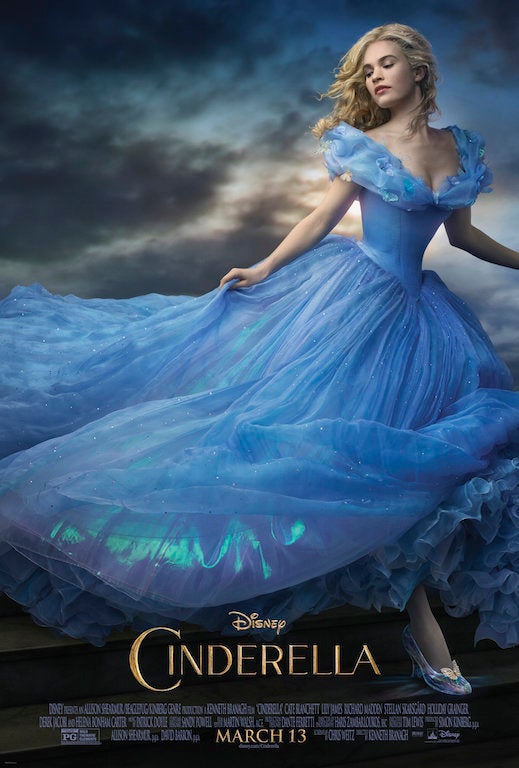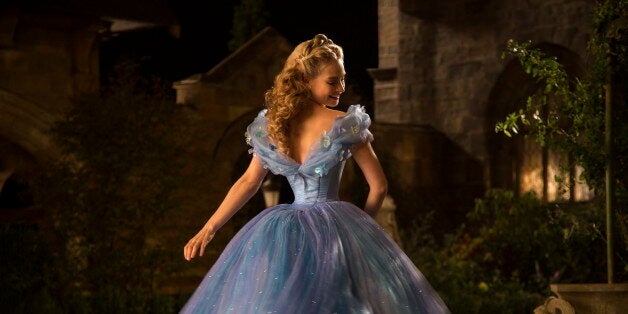
"Isn't he a knight or something?" a woman asked backstage while Sir Kenneth Branagh was being touched up for his recent appearance on HuffPost Live. "He's a sir," a friend corrected. Actually, both are accurate descriptions for Branagh, and he has the stature, elegance and British accent to prove it.
A reimagining of "Cinderella" is Branagh's latest effort. It's a story that has been told before, though so have many of his films -- from "Henry V" and "Hamlet" to last year's "Jack Ryan: Shadow Recruit." Branagh has experience retelling classics, even if this live-action Disney film is a clear departure from his Shakespearian background.
The 54-year-old had a lot of fun with "Cinderella," but the film courted controversy weeks before release. When images of Cinderella's ball gown first emerged, many were outraged that Lily James' waistline appeared digitally altered. She's since said that it wasn't, adding that she maintained a mostly liquid diet while filming that portion of the film in order to fit a corset which "that was pulled [within an] inch of my life."
As Jessica Willingham noted at Bustle, it doesn't help that princesses' waistlines are just one of the anti-feminist symbols of the Disney canon. Except, Branagh sees his "Cinderella" as rethinking of the women-in-need-of-saving trope that colors the animated classics. He told The Huffington Post about the updated version of the tale (and the apparent "sub-sexual eroticism" in his glass slipper scene):

What drew you to reimagining this story?
It was the script. Chris Weitz's process of reimagining the character from the inside out. That seemed to me what was most exciting and most surprising. There’s an uneasy association of the Cinderella story with the modern audience of containing a passive victim waiting for a guy. In fact, the structure of the story responded very well to making time to allow her to become strong, empowered and intelligent. We make various choices to do that. Showing who she was, where she was born and then having a chance to see a relationship with the prince develop. So, it was about the excitement of reimagining that character and sort of turning this tale on its head from the inside out.
The few revisions are reminiscent of "Ever After" -- for example, she meets the prince before the ball. Were you inspired by that telling at all?
No, to be perfectly honest. I enjoyed the film very much at the time. But this was the Disney version of Cinderella. There’s a lineage connected to that original movie. In this film, there’s definitely an attempt to go for the the lavish. There’s a visual invitation there which we embraced. That rich, classical look at it was the dynamic of the sumptuous frame in which the real, human performance could emerge.
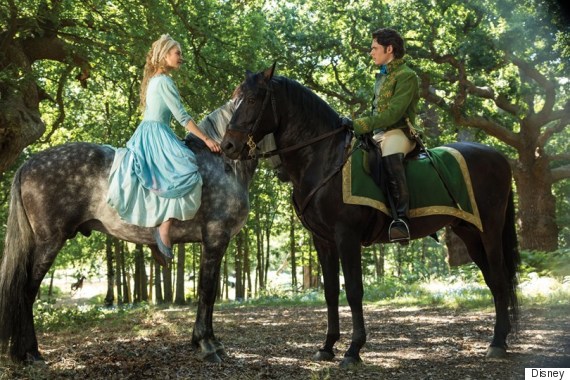
The other break from the classic comes when we get a bit of explanation from the stepmother for her behavior. She recounts her backstory, but then stops short of explaining the full reasoning behind her motives. What held you back there? How did you conceptualize her particular brand of evil?
We wanted a very able man’s woman. We’re in a blur of periods, but it’s very clear in that the period that men run the world. It’s a tougher gig, if you don’t have a man in the household. But I love that Cate Blanchett puts an enigmatic spin on this story of her broken heart. Is that genuine? We don’t know for sure, because she doesn’t tell it in a way that is asking for sympathy. It’s a fact, a passionate fact reflected in not tranquility, but in a sort of cold fury. I also love the consideration of the pause and her inability to finish the sentence when Cinderella stands up and says, “Why are you so cruel?” And she says “Because you are young, and innocent and good, and I ...” And then that dot, dot, dot, it feels like you could fill it with a lot of ideas. At one stage, she said, “And I am not ...” And we said, “Don’t say that.” Let the audience work it out and fill in what that means. It could mean many things. What you do feel is a great passionate woman who seems to have made a different choice when faced with these kind of challenges, these moments of heart break which we saw Ella face. She makes a different choice in the face of those things. It’s a great mirror.
Other than that, things stick pretty closely to the original, though they come with a very different set of aesthetics. Did you consider mirroring the images of the animated film more closely?
We had fun, I would say, saying “thank you” to the Disney classic. That meant including “Bippity Boppity Boo” or Cinderella singing “A Dream Is a Wish Your Heart Makes” from the original. There are a couple of moments. For instance, what I remember about the animated film is that when her dress is torn and she’s at her lowest end in our film she expresses that she doesn’t believe anymore. In the original animated film, she ends up running away in a series of very gothic shots and Dutch angles. There are three or four moments where it goes very “What Ever Happened to Baby Jane.” For a film like that, which is 72 minutes and packed with singing and mice, they give a remarkable amount of time to that moment. So, I think they understood how pivotal it was, and I took that as a cue. To give that much space in a short animated film, a wise man would listen to that an give it that time, and tease the audience with the idea that the fairy godmother showing up might not happen.

Disney has had two versions of Cinderella onscreen in the last three months, with your "Cinderella" and the "Into the Woods" Cinderella. Do you you think of them in relationship with one another?
Yes and no. The character exists in a different sort of fairytale world. I was very familiar with the theater piece, which I’ve seen a number of times. I’m a devotee of Stephen Sondheim. I think he’s a genius. I somehow think of that “Into The Woods” version as entirely from Sondheim’s imagination, and also from Rob Marshall who is a wonderful director. Everything about her feels dirtier and darker. It’s very sardonic and, in a way, some of the cruelty is inwardly inflicted. It’s very sharp and funny at times. It mocks itself a lot. It’s incredibly convoluted and works with dark material.
In contrast with that material, we wanted our Cinderella to be a seeker of knowledge and truth. Someone who was heading toward the life. Someone whose decision was not abandoning her own wry intelligence. For example, just because she doesn’t engage with the stepmother and daughter, doesn’t mean she doesn’t realize they’re being unusual and cruel. You can see in her reactions, there’s an emotional intelligence at work there that has a bit of an arched eyebrow. But she chooses not to go that route. She definitely follows that route of kindness, goodness and courage.
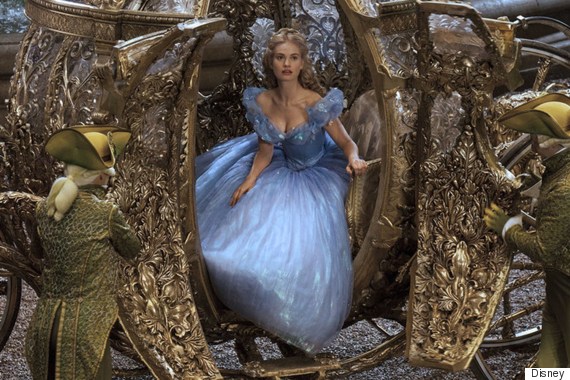
I have to ask you about the dress. There’s been a bit of controversy surrounding speculation it was digitally altered.
No, it wasn’t.
What made you go with such an extreme corseted look? Lily James has said she was tied in "within an inch of my life."
It wasn’t so extreme. I remember the most extreme version of a corset was Mr. Pearl, who made corsets for period pieces and wore a corset himself. He’d worn it for so long that the whole top of his body was pinched in. This was for a short time and there wasn’t a grain of desire or design to meet some so-called example of a feminine shape that we wanted to give character to. It was for these structured costumes with silhouettes that in themselves revealed character. It was about the sensory experience of all of that.
Is the corset a signal of Ella having to force herself -- figuratively and physically -- to fit in in this setting where she doesn’t belong?
That’s a very interesting way of looking at it. What I’ve found about Cinderella is that what it provokes in an audience is really extraordinary. It appears to be a deceptively simple tale, but I’ve heard nothing but people drawing all different things out of it. I watched it the other night and found myself connecting dots of things we did that were unconscious. That’s one of the things that drew me to it. Everything seems to symbolize layers and layers of meaning. In that regard, one of the things we decided to do was not make Cinderella so different from herself at home. When scrubbed up, there wasn’t this kind of makeover hell being transformed into someone the prince hadn’t already fallen in love with.
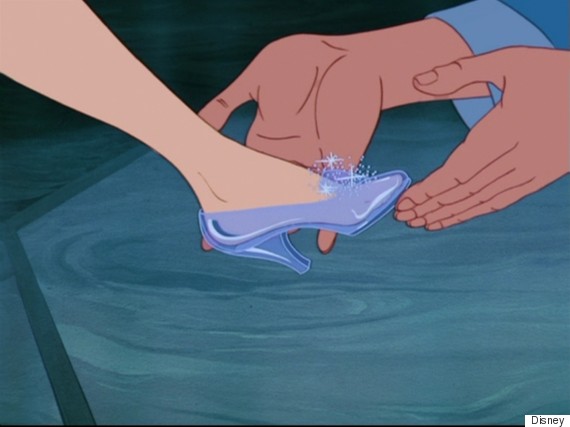
They do form a connection prior to the ball. And yet, she still has to try on the shoe at the end! Could you just not avoid that iconic moment?
I think we had to have it. I think the story is one you come to with a weight of expectations that is almost part of the group ritual of seeing it. I had the same thought as you in that scene. He does already know who she is.
Right, she does a whole speech along the lines of “Accept me as who I am.” And he's like, “Okay, but try the shoe on anyway.”
Well, I suppose you could say there’s ritual. And, in another life, maybe there’s a scene where it didn’t fit. Maybe her foot was swollen, and he says, “You know what? It’s fine. You’re in.” But I think the smile and gallantry with which he does it make feel like just another version of following a ritual.
There’s something sexual about it, maybe, since he’s already tried the shoe on her foot at the ball -- and we get a lip bite there from Lily.
Yes, there’s a tactility here. His hand on the small of her back is quite electric when the dance starts. When he puts the slipper on in the secret garden it has quite a bit of charge behind it. By the end of it, as a boy, you might want to recreate this moment of literally touching that beautiful foot. And, frankly, the sub-sexual eroticism of slipping it on.
"Cinderella" is out on March 13.

